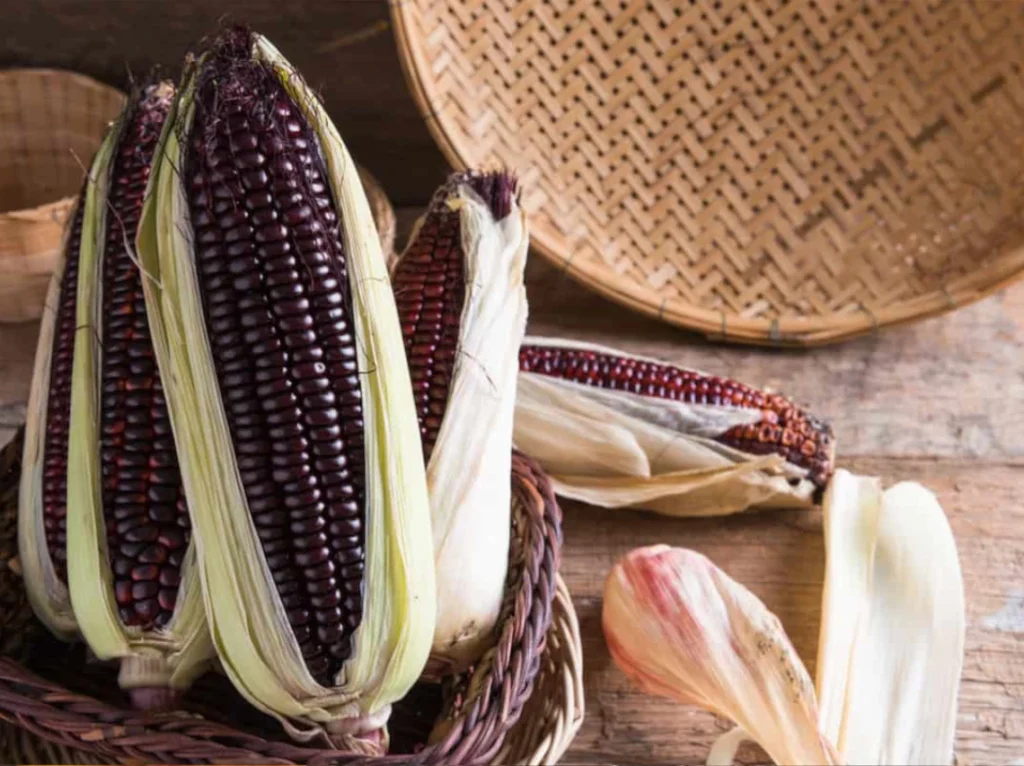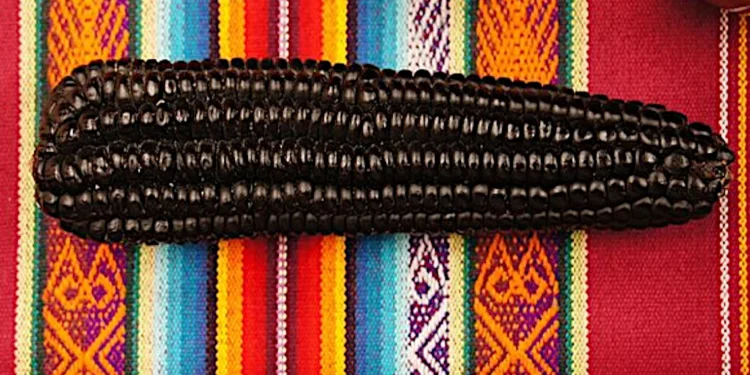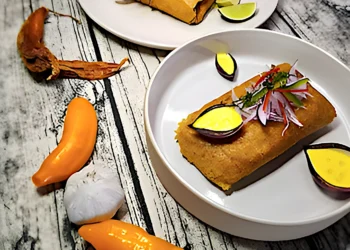This post is also available in:
Español
Nederlands
Legend has it that thousands of years ago, the Andean gods gifted the people of Peru a sacred seed: an intensely colored, almost magical corn that granted strength and vitality to those who consumed it. The Incas revered it, communities cultivated it with devotion, and today, this purple treasure continues to captivate palates and scientists around the world.
But what makes purple corn so special? Why is its history so fascinating, and why does its popularity keep growing? Join us on a journey through time to discover the incredible legacy of this ancestral superfood.
The Origin of Purple Corn: A Legacy from the Andes
Purple corn (Zea mays L.) is a unique variety that has been cultivated for over 5,000 years in the highlands of the Peruvian Andes. Its deep color is no coincidence—it comes from anthocyanins, powerful antioxidants that have made this corn a symbol of health and longevity.

The first archaeological evidence of purple corn was found in pre-Columbian ceramics, where ancient Peruvians depicted it as a divine food. It was not just a dietary staple but an essential element in religious rituals and offerings to the gods.
A Crop That Withstood the Test of Time
Unlike other crops that disappeared with the arrival of the colonizers, purple corn survived through the centuries. During the Spanish conquest, many Andean traditions were replaced, but this sacred grain continued to thrive in Peru’s valleys and mountains.
Today, purple corn is not only a symbol of Peruvian identity but has also conquered the world. Its vibrant color, mild flavor, and impressive health benefits have made it a favorite among chefs, nutritionists, and superfood lovers.
The Rise of Purple Corn in Europe: From the Andes to Gourmet Kitchens
In recent years, purple corn has gained massive popularity in Europe, especially in the Netherlands, where the growing trend toward natural superfoods has boosted its demand.

European consumers are increasingly looking for antioxidant-rich foods, and purple corn has become a star ingredient in products such as:
- Juices and functional beverages (like chicha morada).
- Flours for healthy baking.
- Snacks and desserts without refined sugar.
- Innovative dishes in fusion cuisine restaurants.
This growing demand has also led to an increase in its importation, with more and more European brands incorporating purple corn into their product catalogs.

Why Is Purple Corn So Valuable Today?
The rising interest in superfoods has made purple corn increasingly popular in Europe and the Netherlands. Its benefits include:
- High anthocyanin content, which fights cellular aging.
- Anti-inflammatory and antioxidant properties that protect the heart.
- The ability to regulate blood sugar levels, making it ideal for diabetics.
- Potential anticancer properties, according to recent studies.
Additionally, its versatility in cooking makes it perfect for preparing beverages, desserts, and innovative dishes.
Dare to Try the Purple Gold of the Andes?
Purple corn is more than just an ingredient—it is a piece of history, a gift from the Andes, and a superfood with unparalleled benefits.
Have you ever tried purple corn? Leave us a comment and share your experience—we’d love to hear your thoughts! If you enjoyed this article, share it on your social media and keep exploring more about Peruvian culture at Peruanos.nl.
4o








